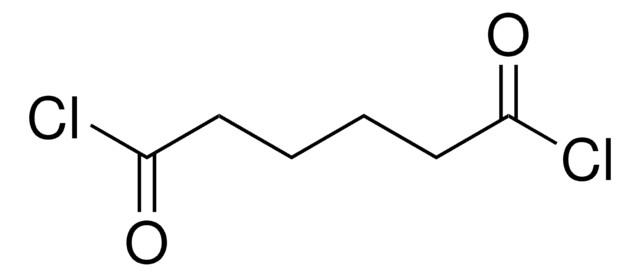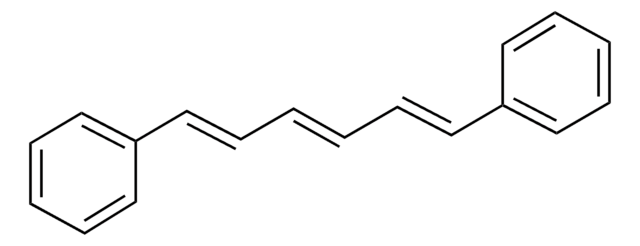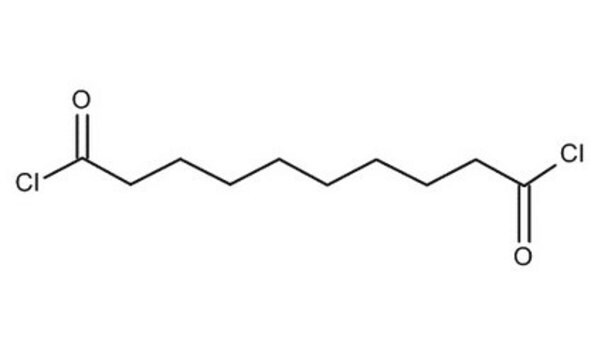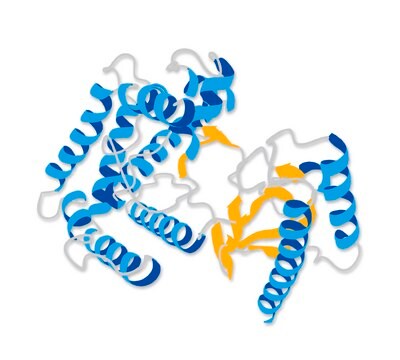810156P
Avanti
18:1-12:0 NBD PE
Avanti Research™ - A Croda Brand 810156P, powder
Synonym(s):
1-oleoyl-2-{12-[(7-nitro-2-1,3-benzoxadiazol-4-yl)amino]dodecanoyl}-sn-glycero-3-phosphoethanolamine
Sign Into View Organizational & Contract Pricing
All Photos(2)
About This Item
Empirical Formula (Hill Notation):
C41H70N5O11P
CAS Number:
Molecular Weight:
840.00
MDL number:
UNSPSC Code:
12352211
NACRES:
NA.25
Recommended Products
assay
>99% (TLC)
form
powder
packaging
pkg of 1 × 1 mg (810156P-1mg)
manufacturer/tradename
Avanti Research™ - A Croda Brand 810156P
shipped in
dry ice
storage temp.
−20°C
General description
N-(7-nitrobenz-2-oxa-1,3-diazol-4-yl) phosphoethanolamine (NBD PE) is a fluorescently labeled lipid where NBD is attached to the headgroup of phosphatidylethanolamine (PE). PE is an aminophospholipid abundant in brain.
Application
18:1-06:0 NBD PE or 1-oleoyl-2-{12-[(7-nitro-2-1,3-benzoxadiazol-4-yl)amino]dodecanoyl}-sn-glycero-3-phosphoethanolamine may be used as a component of liposome in cross-linking experiment and to determine M13 protein coat towards phospholipids.
Biochem/physiol Actions
N-(7-nitrobenz-2-oxa-1,3-diazol-4-yl) phosphoethanolamine (NBD PE) plays a key role as a fluorescent analog in the studies of organization and dynamics of membranes. NBD PE contributes to monitoring Red edge excitation shift (REES) effects, with the unique motional and dielectric properties it possesses.
Packaging
5 mL Amber Glass Screw Cap Vial (810156P-1mg)
Legal Information
Avanti Research is a trademark of Avanti Polar Lipids, LLC
Storage Class
11 - Combustible Solids
Choose from one of the most recent versions:
Certificates of Analysis (COA)
Lot/Batch Number
It looks like we've run into a problem, but you can still download Certificates of Analysis from our Documents section.
If you need assistance, please contact Customer Support.
Already Own This Product?
Find documentation for the products that you have recently purchased in the Document Library.
Fábio Fernandes et al.
Biophysical journal, 87(1), 344-352 (2004-07-09)
Quantification of lipid selectivity by membrane proteins has been previously addressed mainly from electron spin resonance studies. We present here a new methodology for quantification of protein-lipid selectivity based on fluorescence resonance energy transfer. A mutant of M13 major coat
Muhasin Koyiloth et al.
European biophysics journal : EBJ, 49(2), 163-173 (2020-02-06)
In this study, the SCRM-1 gene from Caenorhabditis elegans was cloned and overexpressed in E. coli to study the biochemical properties of scramblase. This is the first report showing that this scramblase from C. elegans possesses a Ca2+-dependent and head
Eun A Ra et al.
Nature communications, 7, 11726-11726 (2016-05-25)
Autophagy is responsible for the bulk degradation of cytosolic constituents and plays an essential role in the intestinal epithelium by controlling beneficial host-bacterial relationships. Atg5 and Atg7 are thought to be critical for autophagy. However, Atg5- or Atg7-deficient cells still
Takao Hanada et al.
The Journal of biological chemistry, 282(52), 37298-37302 (2007-11-08)
Autophagy is a bulk degradation process in eukaryotic cells; autophagosomes enclose cytoplasmic components for degradation in the lysosome/vacuole. Autophagosome formation requires two ubiquitin-like conjugation systems, the Atg12 and Atg8 systems, which are tightly associated with expansion of autophagosomal membrane. Previous
Non Miyata et al.
The Journal of cell biology, 214(1), 77-88 (2016-06-30)
Phosphatidylethanolamine (PE) is an essential phospholipid for mitochondrial functions and is synthesized mainly by phosphatidylserine (PS) decarboxylase at the mitochondrial inner membrane. In Saccharomyces cerevisiae, PS is synthesized in the endoplasmic reticulum (ER), such that mitochondrial PE synthesis requires PS
Global Trade Item Number
| SKU | GTIN |
|---|---|
| 810156P-1MG | 4061835189946 |
Our team of scientists has experience in all areas of research including Life Science, Material Science, Chemical Synthesis, Chromatography, Analytical and many others.
Contact Technical Service